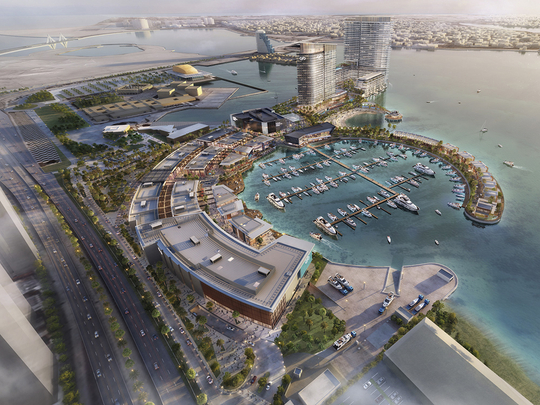
Following the delivery of the iconic Ferrari World in Abu Dhabi, Benoy has experienced remarkable growth in the region over the past 10 years and now has projects in the UAE, Bahrain and Egypt, adding to its international portfolio across Europe, Asia and the Americas.
PW spoke to Neil Kee to find out what the new head of design thinks of Dubai, and how architecture in the region is changing.
What excites you the most about working in the UAE?
I have joined the Dubai design studio at a very interesting time, as 2017 actually marks Benoy’s 10-year anniversary in the region. It is exciting to be working in such a fast-paced, growing city such as Dubai, which is a playground for architects in many ways. It enables creative thinkers such as myself to bring our ideas to life. I always look forward to working in new markets; I’ve worked in over 20 different countries during the course of my career.
It’s not my first time in the UAE. I’ve had the pleasure of working on designing and delivering Ferrari World Abu Dhabi. Working on such an ambitious project of that scale was undoubtedly a career highlight.
Neil Kee helped design Ferrari World Abu Dhabi
Coming from Benoy in Singapore, how do you view Dubai as a place for architectural expression? What differentiates Dubai in the way space is used as opposed to other cities you’ve worked in?
Culturally Singapore, where I was previously based, and Dubai are very different. Each is unique in its own interesting way, but economically and architecturally there are remarkable similarities between the two. Both are global iconic cities that are blessed with a highly talented design pool and a constant drive for innovation. The architecture in both cities is quite impressive and can easily take your breath away.
Neil Kee
I have found that Dubai is akin to an exhibition hall where architects from all over the world have come to display their talents and creative skill, each with their own unique cultural influences and stylistic nuances. This specifically is what makes architecture in Dubai quite unique.
Can you share details of your upcoming projects?
Bahrain Marina is the creation of an authentic urban waterfront district that is envisaged to become a major lifestyle destination for Bahrain, the surrounding region and the global community. It will create a landmark lifestyle attraction connecting the prestigious Bahrain Marina with the people and the heart of Bahrain.
The project has been approached with a focus on placemaking. A series of spaces and high-quality public realm promotes social interaction across a diverse cross section of the public to foster a sense of place and community. The project accommodates multiple uses around a series of social spaces, maximising building design and proportionality as well as the space between buildings, with strong visual focuses on the natural beauty of the site.
Bahrain Marina's design uses fisherman huts as a reference
Architecturally, the design reflects the community’s local character and personality by using fisherman huts as a reference to the original character of the shoreline, a unique and special characteristic of Bahraini heritage. The yacht club is a modern take on the facility originally centred on the site, with its nautical silhouette a focal point to the marina and the jewel of the scheme.
In a fast-moving and competitive global landscape, the intent is for the youth of Bahrain to have the very best platform to excel. Therefore, a new concept has been introduced in “third place” creative spaces, accessible to all of the community and promoting entrepreneurism, youth engagement and creativity; a place where people can design, test and launch enterprises and exhibit their creative work. This facility is strongly connected to the site’s venerated neighbour, the National Museum and cultural district.
Bahrain Marina will be the heart of the community; a place to spend time with friends and family, to eat, drink, be entertained, relax and enjoy life.
How does Benoy see its future in the UAE and the wider region?
Architecture in the region is changing and evolving to connect people with their surrounding environments in new and exciting ways. There is an increased focus on health, lifestyle and community; projects are now becoming pedestrian friendly, there are more open areas for social gatherings and Benoy plays a role in connecting people with place.
Here, I would like to build new relationships and seek out future collaborations. Being new to Dubai, exploring new developments and innovations in the Middle East and North Africa is both a professional and personal goal of mine, in particular projects that are true to the Benoy ethos, which is to give back to the community and area in which we live, and continue to provide innovative design.











